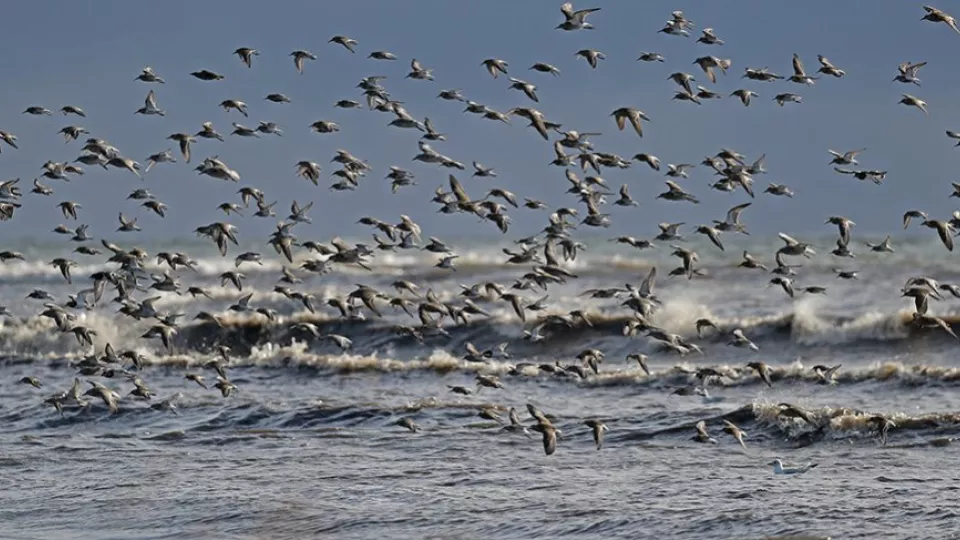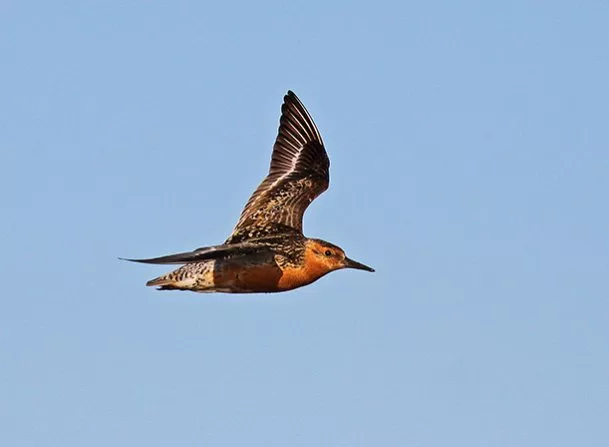Last year, biologists Anders Hedenström and Susanne Åkesson showed that the flight speed of terns is affected by their morphology, weight and the size of their flock. The larger the flock, the faster the speed. Now the researchers have expanded the study and included other birds and more factors that affect speed.
In their new study, the researchers focused on three types of waders – oystercatcher, red knot and dunlin – and monitored bird flocks on southern Öland with the help of an ornithodolite: a binocular instrument equipped with a laser rangefinder as well as height and side-angle sensors.
By connecting the laser instrument to a computer, they registered a sufficient number of positions to get a clear picture of the birds’ flight paths. They also measured the velocity and direction of the wind at different heights. The wind measurements were subsequently compared to the results obtained using the ornithodolite.
The researchers were able to draw several conclusions. Birds compensate for headwinds by increasing the frequency of their wing strokes and thereby flying faster; they compensate for tailwind through fewer wing strokes compared to when there is no wind. Whenever the birds fly along the coast, the coastline helps them to compensate for sidewind and avoid drifting, which is harder when flying over open water.
Furthermore, the size of the flock affects the speed of the waders the same way it does for terns. The researchers have yet to discover why.
“We don’t know for sure, but we believe there is a mechanistic explanation; simply, that the largest, heaviest and strongest individuals determine the speed of the flock”, says Anders Hedenström, biologist at Lund University.
The study also shows that the thin air at higher altitudes helps birds fly faster, and that the faster a bird rises upward in the air, the slower they move forward.
“Our results show that birds adapt their flight speed to several different factors simultaneously and independently of each other. This means that what to us may seem like a simple and straightforward type of behaviour, that is flight speed, has an unexpectedly complex background.”
Publication: Flight speed adjustment by three wader species in relation to winds and flock size
Contact:
Anders Hedenström, professor of theoretical ecology
Department of Biology, Lund University
+46-46-222 41 42
+46-70-543 19 36
anders [dot] hedenstrom [at] biol [dot] lu [dot] se

